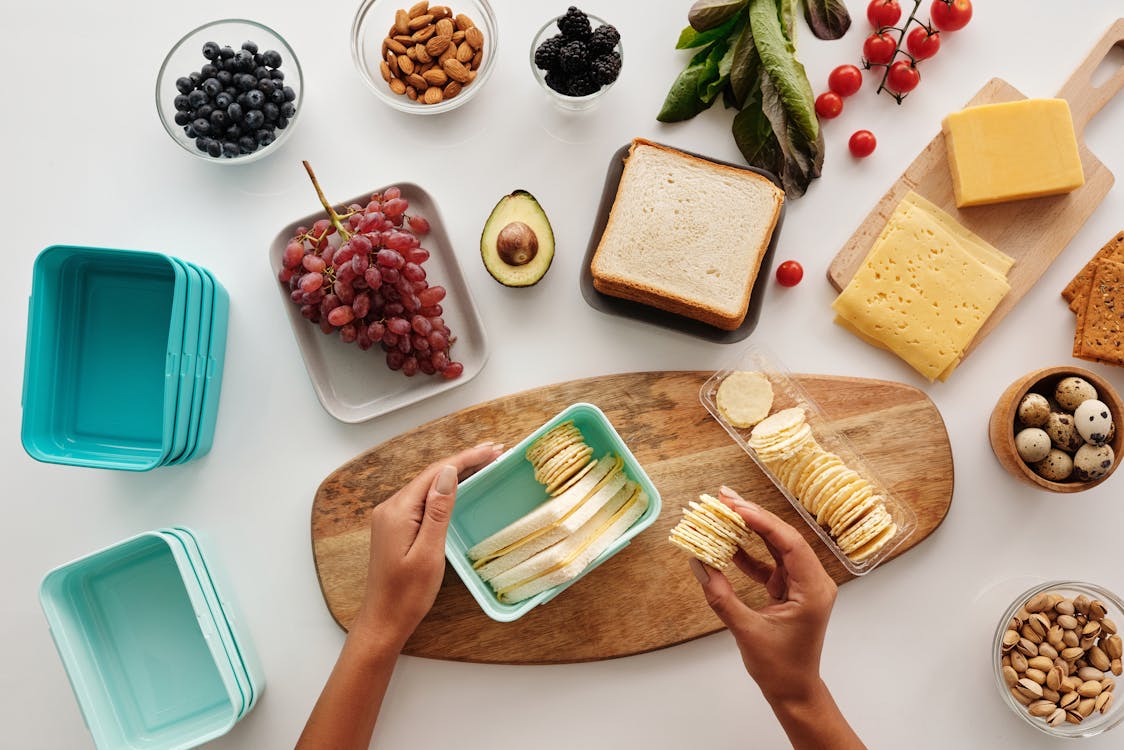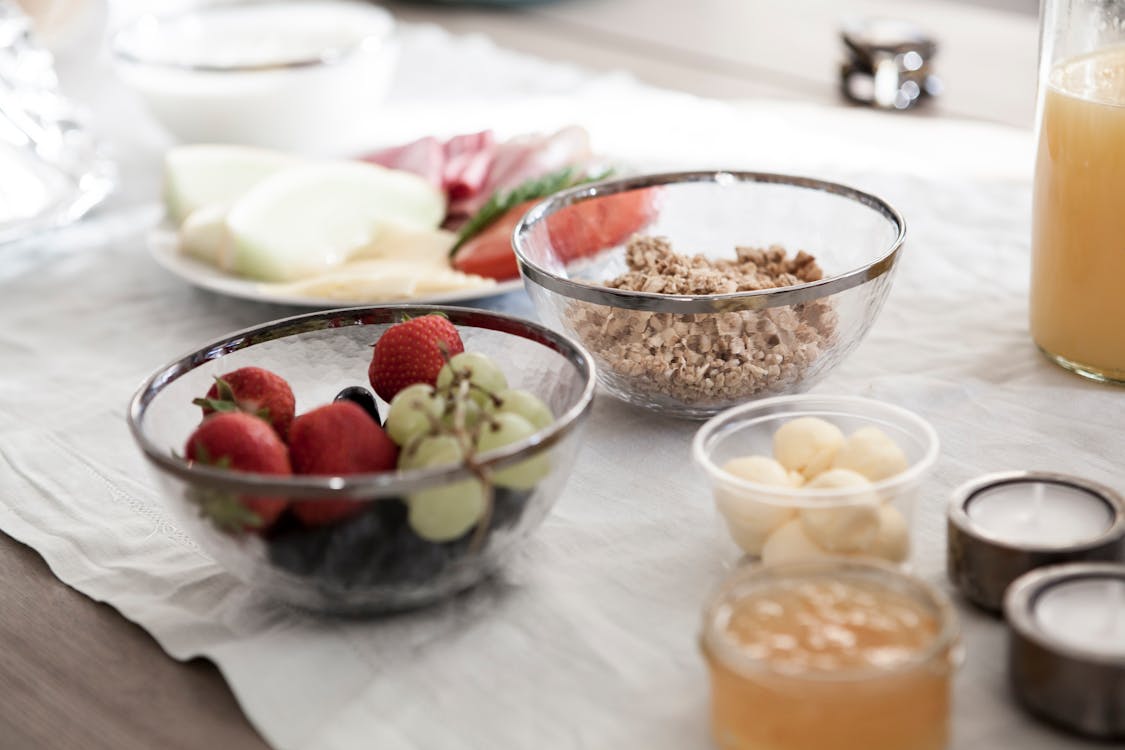Diet foods are a great way to make healthy eating fun and exciting. They also offer a range of important nutrients.
Avoid foods that are high in fat, added sugars, or kilojoules (energy). These are known as discretionary choices and should be eaten less frequently than the other foods in your diet.
Fruit
Fruits provide a variety of nutrients and can be enjoyed as snacks, desserts, or included in meals. They are rich in water and fiber, which can help you feel full with fewer calories and are also a good source of antioxidants that can reduce inflammation and protect against disease.
The United States Department of Agriculture recommends that people eat at least half of their daily, calories from fruits and vegetables. This is called the MyPlate approach and may be especially helpful for those who are overweight.
Some fruits, including grapes and pears, have high levels of potassium, which can reduce the risk of heart disease. Other fruits, such as mangoes and strawberries, are packed with many vitamins and minerals, which can help prevent health issues like cancer and diabetes.
Other nutrients in fruits include fiber, which can help keep you feeling full and promote a healthy digestive tract. Some fruits, such as berries, are also high in antioxidants.
If you want to increase the amount of fiber in your diet, consider including whole-grain products, which are naturally low in fat and high in soluble fiber. They will fill you up for a longer period of time and can help reduce blood cholesterol levels when paired with an overall healthful diet.
Some fruits and some 100% fruit juices are acidic, which can dissolve tooth enamel and increase the risk of developing cavities. Rinse your mouth after eating acidic fruit and drink plenty of water to avoid enamel erosion.
Vegetables
They can lower blood pressure, reduce the risk of certain cancers and heart disease, and keep your digestive tract working properly. They also help regulate your blood sugar, which may aid in weight loss.
Eat a variety of vegetables each day to get the most benefit from your intake. Try to include dark green leafy vegetables, such as kale, collard greens, and Swiss chard; red and orange fruits and vegetables; and legumes (beans and peas).
In addition to their nutrient content, vegetables can aid in weight loss by helping you control your appetite. They’re high in water and fiber, so you won’t feel hungry as quickly after eating them.
Fruits and vegetables are low in calories, making them a great choice for dieters looking to trim extra pounds. They’re also rich in fiber and water, which can help you feel fuller longer, counteract bloating caused by excessive sodium, and prevent constipation.
Although it can be challenging to consume the recommended two to three servings of vegetables a day, incorporating fresh produce into your diet is the best way to reap their many benefits. If you’re unable to eat all of your fruits and vegetables raw, consider adding them to soups, salads or other dishes.
Low-fat or fat-free milk
Low-fat or fat-free milk is a great addition to a diet plan because it contains less calories and is full of nutrients. It can also help you stick to a reduced-calorie plan by keeping hunger at bay and helping you feel full longer.
You can find several types of milk in your grocery store, including whole, skim and reduced-fat. These differ in their fat content, but they all contain similar amounts of micronutrients like vitamin D and calcium.
Reduced-fat milk, which is also labeled as 2% milk or vitamin D milk, has fewer calories and a lower saturated fat content than whole milk. This is due to the removal of some of the fat during processing.
However, since these milks are fortified, they still provide a good source of vitamins A and D. After fortification, a serving (one cup) of reduced-fat milk has 9 percent of your daily value of vitamin A and 29 percent of your daily value of calcium.
It’s important to note that low-fat or fat-free milk does not contain the same calorie-burning protein found in regular dairy products, so it may not be a good choice for someone who wants to lose weight.
The best way to choose the right milk for you is to know your nutrition needs and taste preferences. You can also ask your doctor or registered dietitian to help you choose the right diet plan for you.
Legumes
Legumes are a rich source of protein, fiber and resistant starch, all of which can help keep blood sugar levels stable. They are also low in fat and cholesterol, making them a good choice for people following a heart-healthy diet.
Several studies have linked a higher intake of legumes to decreased risk of cardiovascular disease, including total and "bad" LDL cholesterol, triglycerides and blood pressure levels. In addition, they can help lower inflammation markers in the body.
To make sure you're getting a variety of beneficial nutrients from legumes, it's a good idea to add different types to your diet. For example, chickpeas are an excellent source of folate and manganese. They're also an excellent weight loss food and a great substitute for meat in many recipes.
Another benefit of incorporating more legumes into your diet is their low glycemic index and satiating properties. They're also relatively easy to prepare.
You can use them to make a range of dishes, from soups and stews to salads and hummus. To add flavor to any of these meals, try adding a squeeze of lemon juice or yogurt.
Soaking dry beans before cooking reduces the calorie and carbohydrate content. It also makes them easier to digest by dissolving some of the sugars that cause intestinal gas. For best results, soak your beans for 24 hours before cooking. Be sure to rinse them thoroughly after soaking.
Whole grains
The health benefits of whole grains have been well documented and supported by research demonstrating that people who consume more whole grains have lower rates of heart disease, diabetes and some cancers. They are rich in phytochemicals, such as lignans and phytosterols.
They may also help keep cholesterol levels low and ward off heart disease. In addition, they can increase a person's intake of folate.
To make sure you're getting a good dose of whole grain, check the ingredients list on packaged foods. Look for the words "whole grain" and make sure the grains are one of the first three ingredients listed, advises Keri Gans, RD, a registered dietitian in New York City.
Some whole grains are high in fiber and have been shown to help with weight loss and maintenance. Some of these include oats, brown rice and barley.
The dietary fiber in whole grains helps keep bowel movements regular (studies have shown that those who eat more whole grains have less need for laxatives), keeps the digestive tract healthy, and can help ward off diverticulosis, a condition where little pouches form in the colon wall and cause inflammation, constipation, diarrhea and pain. Choosing whole grains can also improve your digestive health by increasing the population of beneficial bacteria in your gut and making it easier to absorb nutrients from food.
The Impact of Chinese Food on Life
Water
It is also a natural appetite suppressant and makes the digestive system work properly. It reduces the risk of various diseases such as bladder cancer, colon cancer and breast cancer.
Drinking sufficient amount of water daily helps in controlling the body temperature and flushing out all the wastes through urination, perspiration and bowel movement. It also promotes healthy skin and fresh glow.
Some of the most hydrating diet foods include cucumber, blueberries and pineapple. All these foods are rich in water and provide a good amount of vitamins, minerals and fibre.
Cucumbers, for example, have around 96% water content and are a great way to hydrate your body without adding extra calories or fat. They are a great source of antioxidants and can be eaten raw or in salads, smoothies and other dishes.
Pineapple has 86 percent water and is another hydrating option. It is a good source of potassium, vitamin C, magnesium and dietary fiber.
Including these diet foods in your diet can help you to stay hydrated and improve your weight loss efforts. It is also helpful to drink a glass of water with every meal and snack. Getting into the habit of drinking water will become a natural part of your routine and you will automatically start to get more fluids.




